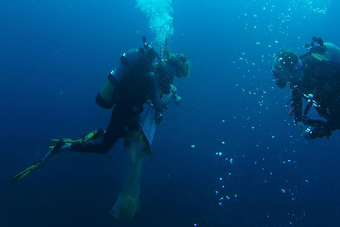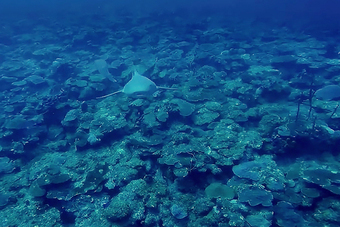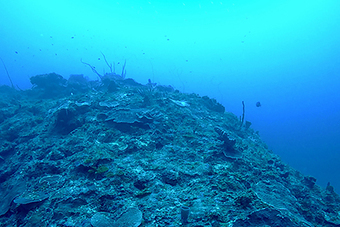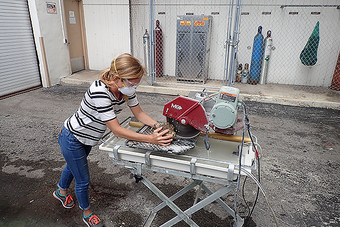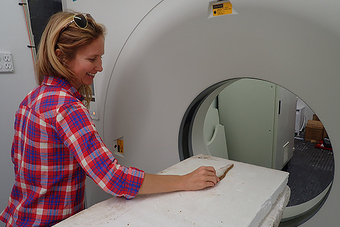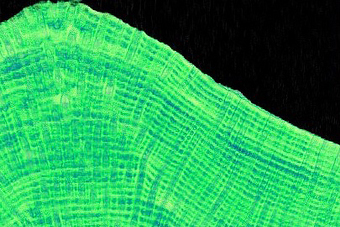Publications:
Groves et al. 2018
Mesophotic coral ecosystems (MCEs) are deep (> 30 m), light-dependent communities that are abundant in many parts of the global ocean. MCEs are potentially connected to shallow reefs via larval exchange and may act as refuges for reef organisms. However, MCE community level recovery after disturbance, and thus, community resilience, are poorly understood components of their capacity as refuges. To assess the potential for disturbance and growth to drive community structure on MCEs with differential biophysical conditions and coral communities, we collected colonies of Orbicella franksi and Porites astreoides and used computerized tomography to quantify calcification. The divergence of coral growth rates in MCEs with different environmental conditions may be species specific; habitat-forming O. franksi have slow and consistent growth rates of ~ 0.2 cm yr−1 below 30 m, regardless of mesophotic habitat, compared to ~ 1.0 cm yr−1 in shallow-water habitats. Slow skeletal growth rates in MCEs suggest that rates of recovery from disturbance will likely also be slow. Localized buffering of MCEs from the stressors affecting shallow reefs is therefore crucial to the long-term capacity of these sites to serve as refugia, given that skeletal extension and recovery from disturbance in MCEs will be significantly slower than on shallow reefs.
6- 47 m
Mesophotic “mentions”
60 x (total of 4629 words)
Classification
* Presents original data
* Focused on 'mesophotic' depth range
* Focused on 'mesophotic coral ecosystem'
Fields
Disturbances
Ecology
Physiology
Focusgroups
Scleractinia (Hard Corals)
Locations
US Virgin Islands
Platforms
SCUBA (open-circuit or unspecified)


